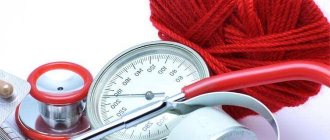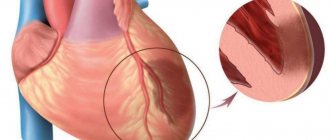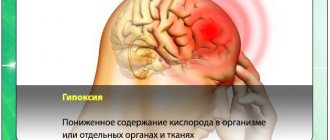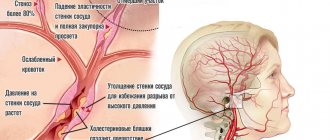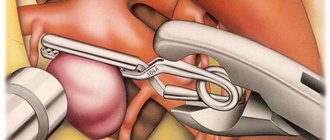Painkillers and NSAIDs (non-steroidal anti-inflammatory drugs) can in most cases be found in the medicine cabinet in every home. This is a very common drug group. Medicines are taken to reduce fever, relieve pain, and eliminate other discomfort and symptoms.
Do they pose a danger to the human body?
«Everything is medicine and everything is poison - it's all a matter of dose».
Paracelsus
The danger of overdosing on painkillers
In some cases, when indicated, doctors prescribe opioid treatment to patients.
These are very dangerous drugs that cause drug addiction quite quickly. All you have to do is not follow the doctor’s prescription, increase the period of use and dosage specified in the instructions or allowed by the doctor, and the dependence on the pills is in your pocket.
Opioids have great analgesic activity, so their abuse can easily lead to severe poisoning and even death.
- You can't convince me to get treatment
? - We will help you with motivation for treatment. As a rule, it is difficult for loved ones to persuade or force an addict to undergo treatment. World experts have developed EFFECTIVE motivation schemes, using which you can lead an addict to the decision to seek help. 8
Combination with other substances
Often, polydrug addicts, in order to reduce the symptoms of “withdrawal” or, on the contrary, enhance the narcotic effects of drugs, take different drugs at the same time. For example, it could be Amphetamine, Baclofen, Habana (aka Lyrica), ethyl alcohol and others. All combinations, without exception, increase the side effects of drugs, and some options end in coma or death.
Gabapentin and Lyrica
Gabapentin and Lyrica (Pregabalin, or Gabana) have almost similar properties in terms of both GABA and effects on the body. Both drugs are used in pharmacological practice for epilepsy.
However, there are also differences between them. For example, Gabapentin is absorbed only in the small intestine, partially, entering the bloodstream slowly and unevenly. Lyrica is absorbed completely, quickly, and penetrates the mucous membrane not only of the small intestine, but also beyond. The combined use of drugs leads to the receipt of the drug effect at different times, and also provokes an increase in the adverse reactions of both drugs.
Gabapentin and coffee
Scientific studies have not found an interaction between gabapentin and caffeine. The combined use of both substances has not been studied.
Gabapentin and alcohol
However, the body's reaction to the combination of gabapentin with ethyl alcohol has been studied quite well. These two substances are absolutely incompatible with each other. Their simultaneous use threatens with the following consequences:
- confusion;
- pain throughout the body;
- irritability, hostility;
- dryness of the oral mucosa;
- loss of coordination of movements;
- bruising (increased fragility of blood vessels);
- swelling of the face, limbs;
- convulsive muscle contraction.
Alcohol greatly increases the side effects of gabapentin, which can lead to coma and death.
Gabapentin and phenibut
Phenibut is a nootropic pharmacological agent, a stimulator of metabolism in the central nervous system. This is an antidepressant not prohibited in sports, which is used to treat anxiety, sleep disorders, restlessness, and irritability. According to reviews, it enhances the effect of gabapentin. At the same time, the likelihood of developing adverse reactions of both drugs increases.
Causes of poisoning
More than 12% of drug poisoning and overdose cases involve NSAIDs. Non-opioid analgesics are widely available and can be purchased at any pharmacy, as they are vital supplies. However, it is impossible to buy narcotic painkillers without a prescription. Their free distribution without a prescription is punishable by law. Painkillers often contain codeine, which is sought after by drug addicts.
Why does poisoning occur with painkillers:
- failure to comply with instructions or doctor's prescription;
- incorrect reception;
- doctor's error;
- increasing dosage;
- lack of knowledge about taking medication;
- low body resistance;
- combination with alcohol, drugs, other drugs;
- cumulative effect due to prolongation of the course of treatment;
- taking the drug for recreational purposes;
- intake during pregnancy;
- when attempting suicide.
Among the most dangerous non-steroidal anti-inflammatory drugs is phenacetin, previously contained in such drugs as Sedalgin and Askofen. This analgesic quite often caused the development of allergic reactions and disruption of internal organs. Today, a substance used as an antipyretic, paracetamol, is used to a greater extent in medicine.
If the patient takes the medicine as prescribed and prescribed by the doctor, an overdose of analgesics and local anesthetics occurs quite rarely. However, most often an overdose of anesthetics is used by drug addicts to achieve euphoria. Pharmacy drugs have long become a source of cheap “high” for them.
Overdose symptoms
Symptoms of an overdose of painkillers and NSAIDs depend on the individual characteristics of the human body, the drug taken and its dosage. In some cases, a person may become ill even after taking a therapeutic dose. Therefore, in order to prevent poisoning from local anesthetics and narcotic analgesics, it is necessary to strictly follow the instructions, which necessarily indicate the maximum daily dosages.
Acute poisoning with narcotic analgesics
Painkillers have different effects on the body, so the dose that can lead to intoxication is different.
Signs of poisoning:
- dizzy;
- be sick;
- vomiting occurs;
- It's difficult to breathe;
- weakness, drowsiness;
- increased sweating;
- loss of consciousness;
- pallor, cyanosis;
- the temperature drops;
- constipation, upset stomach;
- weakening of the pulse;
- swelling;
- pressure drop;
- convulsions, tremors.
Among the first signs: lethargy, drowsiness, lethargy, breathing problems. The condition is deteriorating quite quickly. Common complications that arise from an overdose of anesthetic: cerebral edema, pulmonary edema, cardiac arrest, renal failure. A severe overdose of local anesthetics manifests itself in paralysis of the respiratory center. If you do not call an ambulance in time, the risk of death is close to 75%.
Free phone number for a narcologist in Moscow and throughout Russia: 8 (800) 333-20-07. .
It is important to understand that a person who is poisoned by pills can fall into a coma. Even after emerging from this state, irreversible health consequences are possible: mental disorders, dysfunction of certain internal organs.
For recreational purposes, addicts often overdose on painkillers such as Tempalgin or Nurofen to achieve euphoria. Often, to enhance the effect, pharmaceutical drugs are mixed with alcohol and barbiturates, which significantly increases the intoxication of the body and increases the risk of death.
Do you want to know about the cost of services?
8 call our specialist
Non-narcotic analgesics
Non-opioid and non-steroidal anti-inflammatory drugs in pharmacology include drugs that do not have narcotic potential and are not used by drug addicts. These medications are used as anti-inflammatory, antipyretic, painkillers, etc. Regarding doses, for example, if the daily dose, according to the instructions, is 4 grams, then death can occur even after consuming 15-20 g.
Symptoms of Paracetamol overdose:
- liver dysfunction (the medicine is a dangerous toxin for the liver, causes bleeding disorders, hepatitis);
- disruption of the gastrointestinal tract (stomach pain, nausea, vomiting);
- damage to the central nervous system (drowsiness, weakness, lethargy);
- metabolic disorder;
- low pressure;
- renal failure (nephritis and other kidney diseases);
- disruption of the cardiovascular system due to general intoxication;
- encephalopathy.
Acute poisoning can last for 10-12 hours. You can also be poisoned by the drug if you use it for a long time in an increased dosage, as it accumulates in the tissues of the internal organs. Paracetamol is part of many modern drugs sold in pharmacies, including Spazmolex and Pentalgin. These are dangerous pharmaceutical drugs that addicts use to get a “high.” Often such substances are used for the purpose of suicide attempts.
Anonymous 24 hours a day Activity is licensed Patient accompaniment
Full range of narcology services:
- tests
- drug testing
- detox
- encoding
- psychiatry
- binder
- withdrawal symptoms
8+7
Salicylic acid and salicylates
It is quite easy to get poisoned by this common drug among people; it is enough to consume 10-40 g. The dosage of tablets is individual and depends on the condition of the patient’s body. Death is possible in 2% of cases.
Signs of salicylate poisoning:
- your head is spinning, your ears are ringing, your consciousness is confused;
- headache;
- hallucinations, hearing loss;
- chills, cramps;
- euphoric sensations;
- pain in the abdomen, under the ribs, heartburn;
- nausea, vomiting, upset stomach;
- violation of movement coordination;
- excited state;
- deterioration of cognitive functions;
- disruption of the functioning of the heart and blood vessels, internal organs;
- arrhythmia and tachycardia;
- increased fatigue;
- breathing problems, shortness of breath.
When using salicylic acid, for example, Aspirin in large quantities, internal bleeding may occur.
Gabapentin as a drug
Although gabapentin is initially produced as a drug, its effects on the nervous system and psyche are actively used by drug addicts. The trouble is that using the drug for recreational (off-label) purposes quickly forms a persistent addiction.
What is gabapentin?
Gabapentin is a serious, potent pharmacological agent. A prescription is required to purchase it. Among the main indications for use are pathologies such as epilepsy and pain of neuropathic origin. It is also used as an anxiolytic – it reduces anxiety, improves mood, and normalizes sleep.
Gabapentin is the active ingredient of many drugs - analogues, for example, Neurontin, Convalis, Tebantin and others. If used incorrectly, these drugs have severe side effects. Many drug addicts, not knowing what kind of medicine it is, not understanding the meaning and danger of its effects on the body, purchase it to get a trip (altered mental state).
HOW TO MOTIVATE A DEPENDENT FOR TREATMENT
Composition of gabapentin
Gabapentin is 1-(aminomethyl)cyclohexaneacetic acid. Its chemical formula as a compound is C9H17NO2. The drug Gabapentin contains the substance of the same name in an amount of 300 mg.
Photo of the drug: what it looks like
As a medicine, gabapentin comes in the form of tablets or capsules. Depending on the manufacturer, they can have different colors: green, white, yellowish.
Effect of gabapentin
At the moment, the exact mechanism of action of the substance is unknown. In terms of structural features, gabapentin is similar to gamma-aminobutyric acid, a neurotransmitter of the central nervous system. However, in the body it does not bind to molecules that interact with GABA.
Penetrating into the nervous tissue, the substance blocks the entry of calcium into the cells, as a result of which the inhibitory system is activated and the excitation system is suppressed. The content of serotonin in the blood increases. There is relief of pain and cessation of seizures.
Recreational use of gabapentin leads to changes in human consciousness. The surrounding reality changes dramatically, and hallucinations are possible.
Duration of action of gabapentin
The half-life of the substance in the body is approximately 5-7 hours. Elimination time does not depend on nutrition or dosage. Excreted by the kidneys or by hemodialysis.
Emergency help
The consequences of an overdose of painkillers and drug poisoning are quite serious; without timely emergency medical care, a person can die. If you know that a loved one has taken too many medications, is using pharmaceutical drugs, and you see that he is turning pale and looks sick, you should immediately call a narcologist from the Center for Healthy Youth to your home. Delay in this case can cost your life. Of course, specialists at home will do everything possible to help the victim, but it is necessary to hospitalize him in a hospital for examination, intensive care and resuscitation.
Overdose of painkillers - what to do?
- Call our drug treatment center.
- Make sure the victim is conscious.
- Find out which particular drug caused the intoxication of the body.
- Try to determine the approximate dose.
- Lay the victim on his side and ensure that he does not choke on vomit.
- Provide fresh air, ventilate the room, remove clothing that may block breathing.
- Monitor your blood pressure, pulse and breathing.
- In case of mild or moderate poisoning, it is necessary to rinse the stomach, give the person activated charcoal or an enterosorbent known to you.
- If a person is not breathing or has no pulse, cardiopulmonary resuscitation is necessary.
If a person’s condition is serious, doctors at the drug treatment clinic begin to provide assistance on the way to the hospital. Naloxone is most often used for poisoning with narcotic analgesics. It is an opioid receptor antagonist, an antidote, which is widely used in modern narcology. It is used when coding alcoholism and drug addiction to reduce cravings for chemicals.
If the victim has trouble breathing, he may need a ventilator. Doctors prescribe treatment based on tests, examinations, examinations and diagnostics. It is important to understand that therapy is always individual and depends on existing indications and contraindications.

